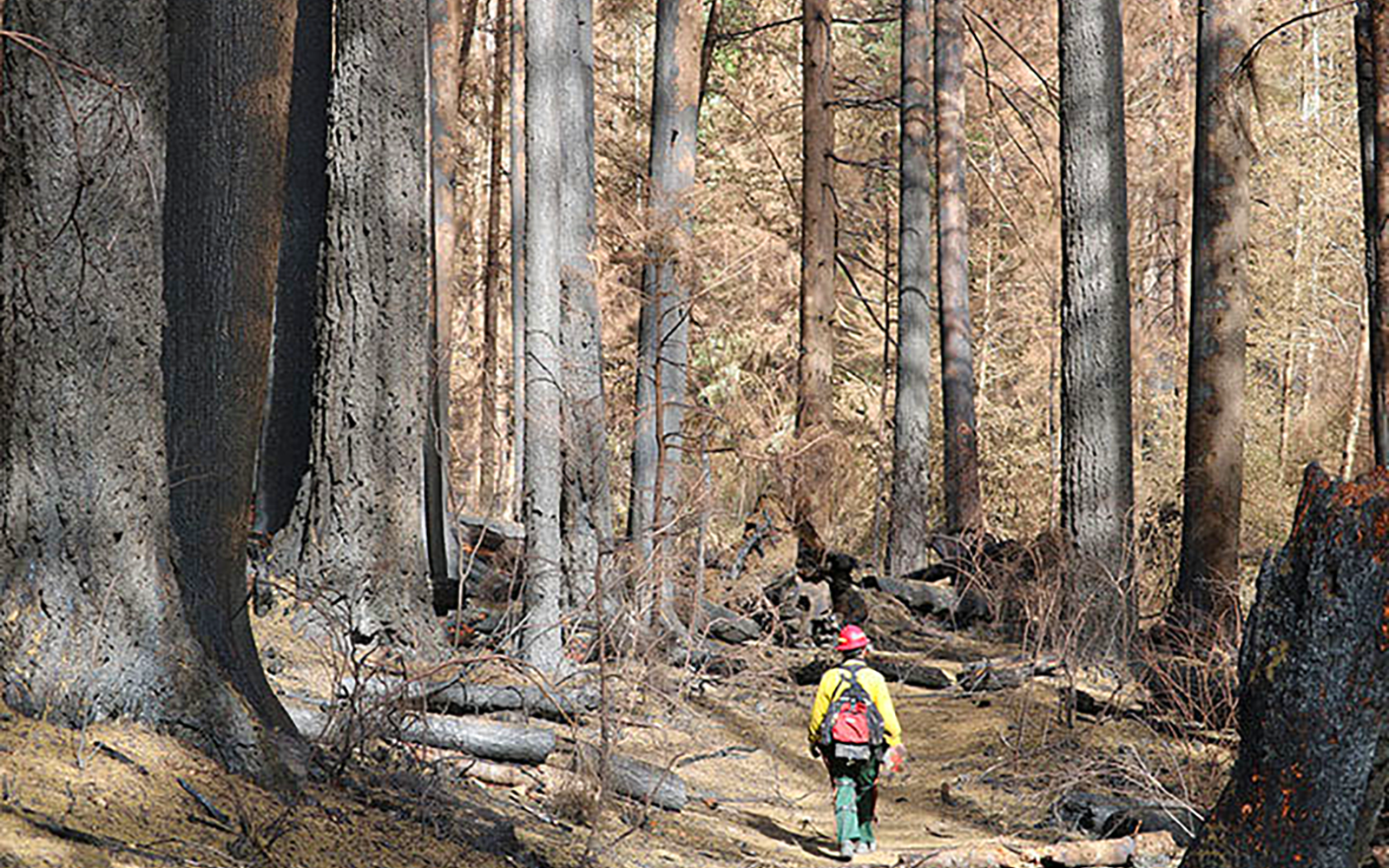FOR IMMEDIATE RELEASE
April 14, 2021
Contacts:
Nick Cady, Legal Director, Cascadia Wildlands; email, 314.482.3746
Noah Greenwald, Endangered Species Director, Center for Biological Diversity; email, 503.484.7495
Environmental Groups Sue to Stop Post-Fire Logging on Oregon State Forest
Organizations Challenge Department of Forestry’s Clearcutting in Santiam State Forest After Last Summer’s Wildfires
Portland, Oregon — Today conservation groups including Cascadia Wildlands, the Center for Biological Diversity, Willamette Riverkeeper, Audubon Society of Corvallis, Audubon Society of Salem, Oregon Wild, and the Benton Forest Coalition filed suit challenging the ongoing post-fire clearcutting in the Santiam State forest east of Salem. Closed to visitors since 2020’s Labor Day wildfires, the state forest is currently being extensively logged by the Oregon Department of Forestry (ODF).
The Oregon Department of Forestry’s logging operations in the Santiam State Forest are particularly contentious as they are impacting areas beloved by mountain bikers, horseback riders, and hikers including the Monument Peak horse camp and the Niagara area.
Mark Goldsworthy, a Salem resident and member of Cascadia Wildlands said:
“I’ve been mountain biking in this area for years and got to know the trails really well. When I heard that the area was due to be clear cut I was shocked and disheartened. It’s like losing an old friend.”
Community members and environmental organizations are also raising concerns about the significant ecological impact that heavy logging has on post-fire forests and watersheds. Research shows that post-fire salvage logging damages the local environment and delays forest recovery, while releasing large amounts of carbon — further exacerbating the global climate crisis.
Nick Cady, Legal Director with Cascadia Wildlands, said:
“Oregon’s Department of Forestry is doubling down on the devastating effects of last year’s fire season, and clearcutting some of the most treasured recreation areas in the Santiam State Forest. These are beautiful forests in protected areas and the Department is taking advantage of the fires to log these areas and triple its volume output for the year. The agency is out of control.”
Post-fire logging typically removes most of the remaining trees and involves intense road building and maintenance, the planting of non-native species and the application of toxic herbicides. The combined impacts of these actions disrupt forest health, degrade habitat, harm forested watersheds, and impact aquatic ecosystems by driving erosion and removing potential habitat in the form of woody debris (Karr et al. 2004, Donato et al. 2006, Reeves et al. 2006).
Noah Greenwald, Endangered Species Director with Center for Biological Diversity, said:
“Salvage logging the Santiam State Forest will do great damage to spotted owls, struggling salmon populations, water quality and forest recovery. The Oregon Department of Forestry is stuck in the 1950s and out of step with science and the values of most Oregonians.”
Logging emits far more carbon than even severe wildfire (Law et al. 2018). While fire-killed trees may take several decades or even centuries to decompose, during the logging and milling process, most of the carbon is rapidly released into the atmosphere (Smith et al. 2006, Gower et al. 2006). Post-fire logging undercuts the natural sequestration and storage capacity of post-fire forests and contributes to carbon emissions that worsen climate change.
Rebecca White, Wildlands Director with Cascadia Wildlands, said:
“We’ve known for a long time that burned forests are great at storing carbon, but not when they’re logged. It’s time for our state land managers to plan actions that will help us fight against climate change, not contribute to making it worse.”
In congressional testimony to the House Subcommittee on Resources (November 10, 2005, hearing on HR4200), University of Washington Professor Jerry Franklin said “Timber salvage is most appropriately viewed as a ‘tax’ on ecological recovery.”
Travis Williams, Executive Director of Willamette Riverkeeper, said:
“Protection of high watersheds of the Willamette River are critical to the overall health of the river system.”
The Santiam watersheds drain some 1,800 square miles from the Cascade range, providing an abundance of clear, cold water that is beneficial to the Willamette River.
Find an interactive map of the areas proposed for logging here.
Find photos of the ongoing logging here.
Review the filed lawsuit here.
###
Cascadia Wildlands is a Eugene-based nonprofit working to defend and restore Cascadia’s wild ecosystems in the forests, in the courts, and in the streets.
The Center for Biological Diversity is a national, nonprofit conservation organization with more than 1.7 million members and online activists dedicated to the protection of endangered species and wild places.
Willamette Riverkeeper works to protect and restore the Willamette River’s water quality, habitat, and ecological health through advocacy, education, and on-the-ground projects across the Willamette River Basin.

